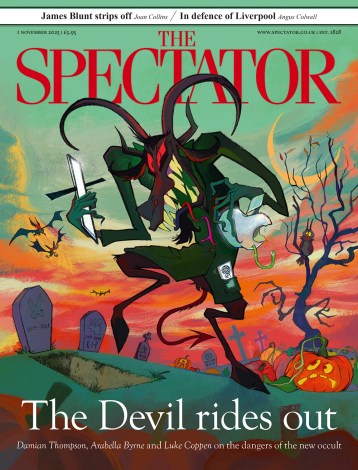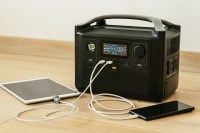At her school interview, my daughter was asked to name the most important technology of the modern age. I’m proud to say she answered ‘sewerage’. Some historians now claim the washing machine was, in economic terms, a far more revolutionary innovation than the internet or the mobile phone: it was this which enabled women to enter the workforce.
Yet in the past 30 years, aside from the microwave, progress in home appliances seems slow. Dyson’s washing machine went nowhere. In some ways this kind of innovation is difficult: few people replace their washing machine every two years as they do their mobile phones.
In the kitchen, counter space is limited; many people have had disappointing experiences with nine-day wonders such as yoghurt or ice-cream makers which, once consigned to gadget purgatory at the back of the cupboard, leave their owners cynical about such novelties. Yet there are brilliant ideas out there. A year ago I bought something called the Philips Air Fryer (available at Amazon for about £125). In a saner world, every home would have one — since it magically ‘fries’ food without using any oil at all. We use it almost daily. But I have yet to persuade anyone I know to buy one. Imagine how frustrating it must be for the person who invented the Air Fryer to see TV reports showing crowds queuing round the block to buy the ‘revolutionary’ new iPhone: a slightly elongated version of the iPhone which preceded it. And which they already own.
True, such gadgets take up little space. And it is easy to offload your old iPad or iPhone (the usual practice is for the male in the household to decide, with scant supporting evidence, that his outdated iPad would make a perfect present for his wife). But you also see at work what psychologists call ‘domain dependence’, where the importance attached to having ‘the latest thing’ varies wildly from one category of goods to the next.
Domestic appliances are no longer a source of status or conversation. Yet they were once. I can remember in the 1970s being shown around someone’s new house with my parents when the culmination of the whole tour — the equivalent of the Sistine Chapel on a tour of the Vatican — was the revelation of a new chest freezer in the garage. (Actually, following the garish restoration, I would rather look at a chest freezer than the Sistine Chapel, but that may just be me being a Protestant.)
The great mistake that is often made in assessing ‘improvements’ in these novelty-fixated categories is that we are all focused on addition not subtraction. ‘What can this phone now do that the old one couldn’t?’ we ask. What we forget to ask is ‘and what is the price of this complexity?’ So the new iPad has a ‘Retina display’, microscopically better than its predecessor. This requires a larger battery. Fine. Except this new battery takes seven hours to charge. If you get drunk one evening, fall asleep on the sofa and forget to charge the thing overnight, for the next day you have a £450 table mat. So in a few weeks’ time I plan to introduce you to the Chromebook, Google’s appealingly contrapuntal attempt to strip the computer back down to its basics.
Meanwhile I owe you an answer to the dwarf question (with thanks to David Vaccaro and Valentine Guinness). The first dwarf, by prearrangement, answers ‘black’ if he can see an even number of black hats on the other dwarves, ‘white’ if he can see an odd number. This single bit of information is enough for each of the other 14 dwarves to infer, by observing the other 13 dwarves’ hats, what must be the colour of his own.






Comments